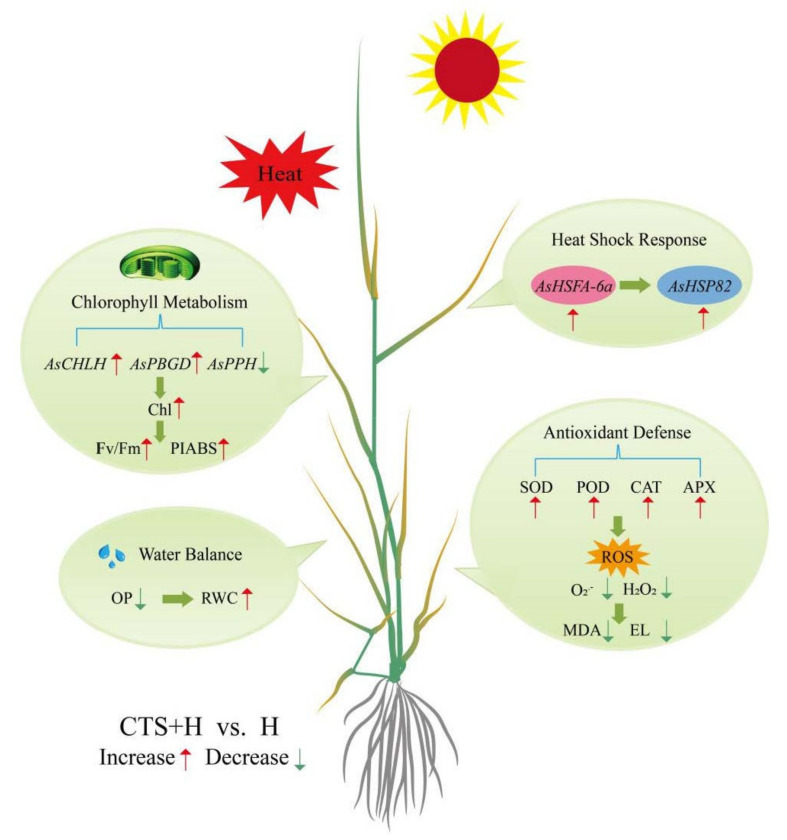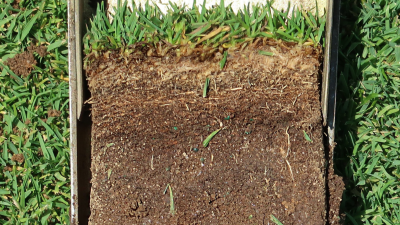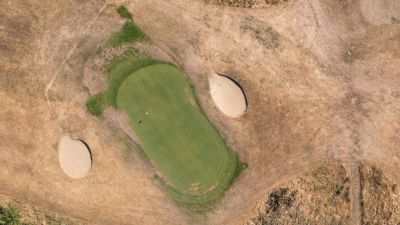06.09.2024
Using chitosan to protect creeping bentgrass against heat stress
Chitosan is becoming and essential tool for the management of turfgrass in the era of climate change
Rising temperatures and more frequent heatwaves, direct consequences of climate change, pose significant challenges for turf management, particularly on golf courses. Agrostis Stolonifera (creeping bentgrass), one of the most commonly used grass species on putting greens, is highly vulnerable to heat stress. Under extreme heat conditions, this species shows a significant decrease in leaf water content, reduced efficiency of the photosynthetic system and excessive accumulation of reactive oxygen species (ROS), which cause serious cell damage. These factors result in accelerated ageing of the leaves (senescence) and a loss of green colour (chlorosis), compromising the overall vitality of the grass.
Chitosan, a natural polymer extracted from chitin found in the exoskeletons of crustaceans, has proved to be an effective biostimulant for mitigating the effects of heat stress on plants. Its mode of action is related to the activation of natural defence responses, increasing plant resistance to stress. Recent studies (Huang C. et al., 2021) have shown that the application of exogenous chitosan significantly improves the resilience of Agrostis Stolonifera in the face of adverse thermal conditions.
Molecular and Physiological Mechanisms of Chitosan in Resilience to Heat Stress
The application of chitosan during periods of intense heat promotes a series of molecular and physiological responses in the Agrostis Stolonifera. On a physiological level, chitosan helps to increase water retention in plant tissues, reducing excessive transpiration and helping the plant to maintain leaf turgidity. In addition, the accumulation of reactive oxygen species (ROS), resulting from deregulated metabolic processes under heat stress, is drastically reduced by the application of chitosan, since it induces the activity of antioxidant enzymes.
In molecular terms, chitosan stimulates the expression of genes involved in chlorophyll biosynthesis and reduces the expression of genes associated with chlorophyll degradation, which protects the chlorophyll content in the leaves. In addition, chitosan negatively regulates the expression of genes related to senescence, thus delaying leaf ageing and prolonging photosynthetic functionality. This molecular effect results in prolonged vitality and robustness of the grass, even in extreme heat.
Stimulation of antioxidant enzymes
Chitosan plays a fundamental role in activating the plant's natural antioxidant defences. Under heat stress, the excessive production of ROS can result in irreversible cell damage, such as lipid peroxidation of cell membranes. However, the application of chitosan stimulates the activity of crucial antioxidant enzymes such as superoxide dismutase (SOD), catalase (CAT), peroxidase (POD) and ascorbate peroxidase (APX), which effectively neutralise ROS, protecting cells from oxidative damage and delaying heat-induced senescence.

Chitosan as an Essential Tool in Turf Management
Faced with the increasing severity of climate change, the ability to effectively manage lawns under conditions of intense heat has become a priority for those responsible for maintaining green spaces. Chitosan stands out as a sustainable and effective solution, as it is biodegradable and environmentally friendly. Its regular application to lawns not only improves water retention and protects photosynthetic pigments, but also strengthens the plant's antioxidant defences, reducing the need for additional water and chemicals to protect the grass.
In addition, integrating chitosan into maintenance programmes allows managers to anticipate and mitigate the damage caused by extreme heat conditions, guaranteeing high-quality playing surfaces while promoting the long-term health of lawns. By enhancing the molecular and physiological responses of Agrostis Stolonifera, chitosan plays a crucial role in preserving its vitality and performance in scenarios of increasing heat stress.
Incorporating chitosan into routine turf maintenance significantly increases resistance to heat stress, contributing to the longevity and quality of playing surfaces, as well as minimising the negative impacts of severe weather conditions.
Image credit ‘Huang C, Tian Y, Zhang B, Hassan MJ, Li Z, Zhu Y. Chitosan (CTS) Alleviates Heat-Induced Leaf Senescence in Creeping Bentgrass by Regulating Chlorophyll Metabolism, Antioxidant Defence, and the Heat Shock Pathway. Molecules. 2021 Sep’






